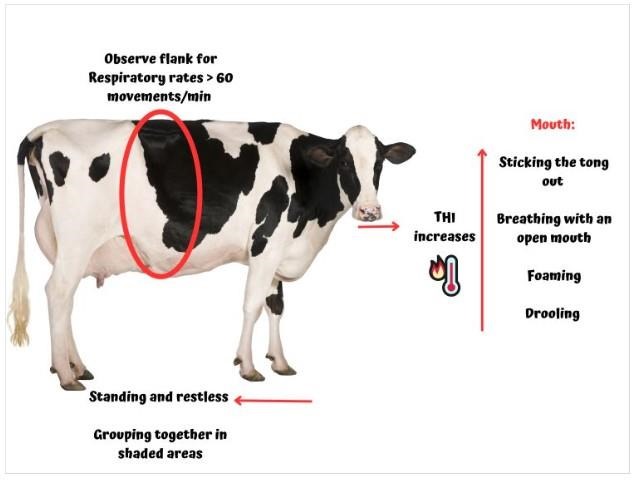Coming off a record-breaking performance in 2021, U.S. beef exports remained red-hot in January, according to data released by USDA and compiled by the U.S. Meat Export Federation (USMEF). Pork exports continued to trend lower in January, despite another outstanding month for exports to leading market Mexico.
Beef exports totaled 119,066 metric tons (mt), up 13% from a year ago, while value soared 57% to $1.03 billion. This was the third-highest value total on record – trailing only August and November of last year – and export value per head of fed slaughter set a new record, topping $500 for the first time.
“This is a truly remarkable run for U.S. beef exports, and the momentum is not limited to our large Asian markets,” said USMEF President and CEO Dan Halstrom. “Regions such as Central America and the Caribbean contributed significantly to January export growth, and export value made strong gains in the Middle East.”
January pork exports totaled 208,808 mt, down 16% from a year ago, while export value fell 14% to $555.6 million.
As expected, the continued rebound in China’s pork production has slowed demand for U.S. pork, but Halstrom also noted the impact of additional headwinds.
“We have spoken often over the past year about port congestion and other logistical challenges, and shipping costs are heavily impacting the U.S. pork industry’s ability to serve certain markets,” he said. “Australia, for example, has been a very reliable destination for U.S. hams for further processing, but shipping raw material to Oceania is becoming cost-prohibitive. The low price of European pork is also impacting demand in other further-processing markets such as Southeast Asia and Taiwan. This underscores the importance of our Western Hemisphere markets, where the U.S. industry continues to pursue new strategies for increasing pork consumption and expanding demand. It is also a reminder that the U.S. industry must continue to strive for market diversification, so we are well-prepared for shifts in the competitive landscape.”
Huge month for Korea pushes January beef exports past $1 billion milestone
Beef exports to South Korea reached a record $2.38 billion in 2021, and demand didn’t miss a beat in January. Exports to Korea climbed 39% from a year ago to 29,578 mt, while export value nearly doubled to a record $316.5 million (up 99%). While U.S. beef’s pandemic-era growth in Korea has been largely driven by soaring retail demand, the foodservice outlook is also brightening as health officials recently loosened social distancing requirements and allowed longer operating hours for restaurants. Korea’s tariff rate on U.S. beef, which was 40% before the Korea-U.S. Free Trade Agreement entered into force, dropped to 10.7% this year and will reach zero at the end of 2026.
Demand for U.S. beef in China/Hong Kong remained strong in January, climbing 69% from a year ago to 19,772 mt, while export value more than doubled ($194.2 million, up 115%). USMEF projects continued growth for U.S. beef in the region this year, though at a more moderate rate than in 2021 when export volume increased 87% year-over-year to more than 240,000 mt. Meaningful access to China – which was first achieved in early 2020 through the Phase One Economic and Trade Agreement – is also a supportive factor in the prices U.S. beef cuts command in other Asian markets.
January beef exports to Japan were up 4% from a year ago at 22,936 mt, while value jumped an impressive 32% to $181.7 million. Exports were bolstered by a strong performance for beef variety meat – mainly tongues and skirts – which increased 20% in volume (4,367 mt) and 69% in value ($41.8 million).
Other January results for U.S. beef exports include:
- Exports to Taiwan raced to a fast start in 2022, climbing 80% to 6,914 mt, while export value jumped 115% to $83 million. However, the large increase in January was due in part to delayed shipments that would normally have arrived before the end of the year.
- Beef exports to the Middle East were relatively steady in volume (6,761 mt, down 1%) but increased 29% in value to $26.3 million, led by strong value growth in Egypt, the United Arab Emirates and Kuwait.
- Led by excellent value growth in Japan, Egypt, Mexico, China/Hong Kong, Vietnam, Gabon and Honduras, beef variety meat exports increased 36% in value to $93 million, despite a 3% drop in volume (22,977 mt).
- A rebound in foodservice demand helped beef exports to the Caribbean climb 28% from a year ago to 1,857 mt, while value doubled to $17 million, led by strong results in the Dominican Republic, Jamaica and the Bahamas.
- Beef exports to Central America continued to expand in January, increasing 14% from a year ago to 1,803 mt, while value jumped 45% to $13.1 million.
- January beef export value equated to a record $503.68 per head of fed slaughter, up 62% from a year ago and topping $500 for the first time. Exports accounted for 15.4% of total beef production and 13.3% for muscle cuts, up substantially from the year-ago ratios of 13.3% and 11%, respectively.


Bright spots for January pork exports include Mexico, Korea, Dominican Republic
Last year Mexico reclaimed its position as the leading destination for U.S. pork exports, taking nearly 875,000 mt valued at $1.68 billion. This strong performance continued in January, with exports climbing 36% from a year ago to 87,027 mt, valued at $136.6 million (up 24%). With the tight U.S. labor situation, Mexico is an especially attractive market for bone-in hams for further processing. U.S. pork also continues to make impressive strides in Mexico’s retail and foodservice sectors.
While January pork exports to South Korea declined slightly year-over-year (15,729 mt, down 1%), the upward trend in value continued as export value reached $58.4 million (up 30% and the highest since May). Korea is importing larger volumes of chilled pork from the U.S. and Canada – its two largest chilled suppliers – and the U.S. industry continues to capitalize on Koreans’ growing demand for home meal replacement items and other convenience-based products.
Click here to see more...